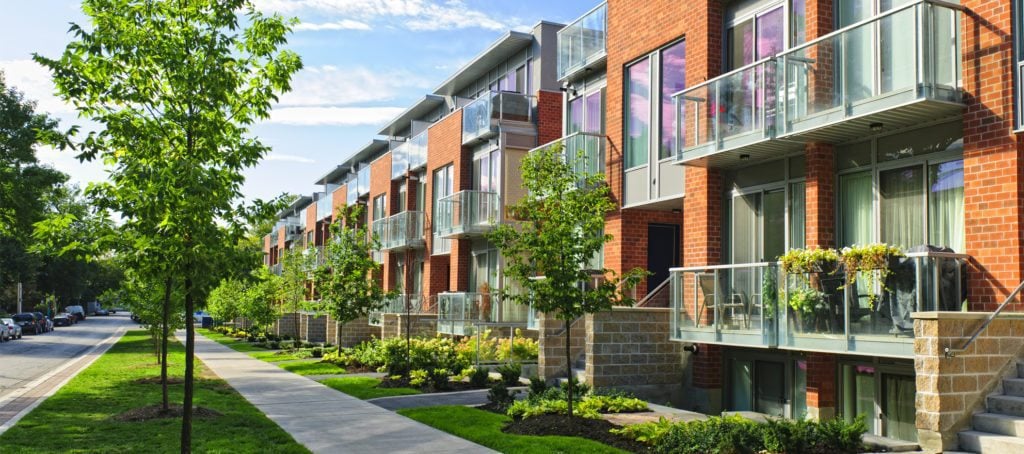Mortgage payments are as high as it’s been in recent memory. But a sudden slowdown in growth may spell a turning point for the market.
In a shifting real estate market, the guidance and expertise that Inman imparts are never more valuable. Whether at our events, or with our daily news coverage and how-to journalism, we’re here to help you build your business, adopt the right tools — and make money. Join us in person in Las Vegas at Connect, and utilize your Select subscription for all the information you need to make the right decisions. When the waters get choppy, trust Inman to help you navigate.
Months of breakneck-paced growth in the size of a typical mortgage payment may have finally sputtered.
The median payment for mortgage applications ticked upward to $1,897 in May, according to the Mortgage Bankers Association’s latest report.
That’s a mere $8 increase over last month’s median house payment — and a sign that the freefall in home affordability since the start of the year may have been brought to a sudden halt.
“Inflationary pressures and rates above 5 percent are both headwinds for the housing market in the coming months,” MBA Associate Vice President for Housing Economics Edward Seiler said in the report. “MBA’s new forecast anticipates that sales of new and existing homes will fall below 2021 levels.”
Courtesy Mortgage Bankers Association
As recently as January, buyers were operating in a different paradigm. The median mortgage payment then was $1,526, a relic of still-enticingly low interest rates and home prices that had yet to climb as high as they would in the months to come.
As the growth of mortgage rates kicked into high gear, the median payment leapt by $127 per month in February, rose another $83 in March, and saw another spike of $153 in April.
The slower increase of $8 in May was likely little comfort to buyers at the time. They still found themselves taking on the largest payments as a share of household income since at least 2009.
Through its Purchase Applications Payment Index, the mortgage industry trade group tracks changes in mortgage rates, home prices and household income.
A higher mortgage index number means the median monthly payment is taking up a greater share of an area’s household income.
This measure of affordability suggests that incomes in May failed to keep up with the growth in mortgage payments once again. The share of income taken up by mortgage payments that month rose by 0.4 percent nationwide.
Housing in some parts of the country — particularly states bordering California — have been driven to unaffordable extremes for many residents who require financing in order to secure a purchase.
Idaho — home of the popular migration destination of Boise — was the housing market where affordability eroded most quickly over the past decade. The median mortgage payment there as a share of state income was 2.5 times as high as it used to be in 2012.
Nevada nearly matched that change, and Arizona wasn’t far behind, at 2.3 times its 2012 payment-to-income ratio. Rounding out the top five in payment-to-income growth were Utah and California, each doubling over the past decade.
Virtually no state in the country saw wages grow quickly enough to offset the increase in monthly mortgage costs.
Alaska came closest, with the payment-to-income ratio rising by only 3 percent over the past decade. Connecticut, West Virginia and Oklahoma saw mortgage payments outpace wage increases by moderate amounts.
Email Daniel Houston



 Are You Interested in West Eleventh Residences Miami?
Are You Interested in West Eleventh Residences Miami? Are You Interested in ONE Park Tower by Turnberry?
Are You Interested in ONE Park Tower by Turnberry? Are You Interested in Diesel Wynwood Condominium?
Are You Interested in Diesel Wynwood Condominium? Are You Interested in Five Park Miami Beach?
Are You Interested in Five Park Miami Beach? Are You Interested in Cipriani Residences Miami?
Are You Interested in Cipriani Residences Miami? Are You Interested in Bentley Residences Miami?
Are You Interested in Bentley Residences Miami? Are You Interested in Baccarat Residences Brickell?
Are You Interested in Baccarat Residences Brickell? Are You Interested in Aria Reserve Miami?
Are You Interested in Aria Reserve Miami? Are You Interested in 888 Brickell Dolce & Gabbana | Miami?
Are You Interested in 888 Brickell Dolce & Gabbana | Miami? Are You Interested in 600 Miami WorldCenter?
Are You Interested in 600 Miami WorldCenter? Are You Interested in HUB MIAMI RESIDENCES?
Are You Interested in HUB MIAMI RESIDENCES? Are You Interested in WALDORF ASTORIA RESIDENCES?
Are You Interested in WALDORF ASTORIA RESIDENCES?